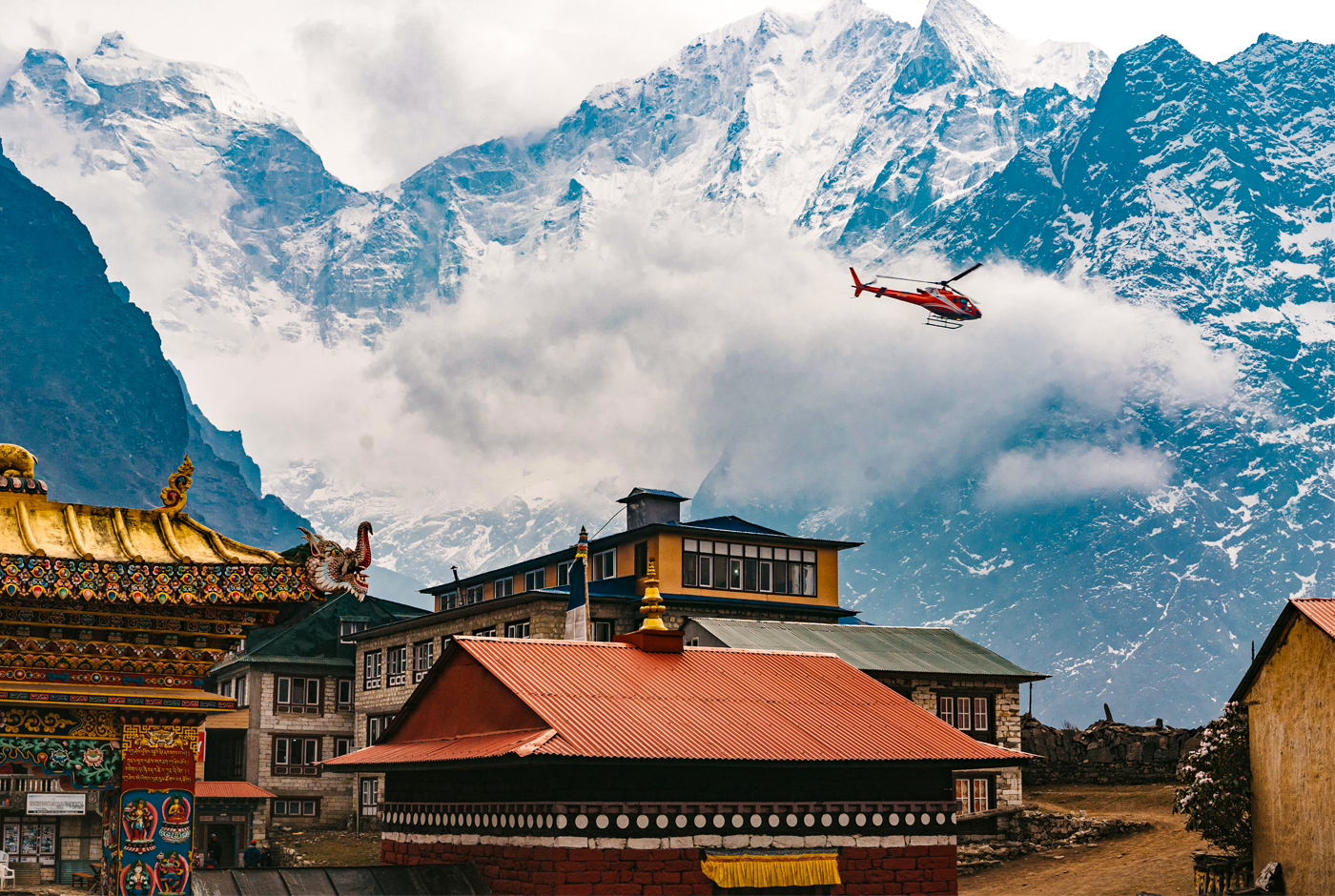Tengboche Monastery sits atop a hill at Dudh Koshi's confluence and the Imja Khola Rivers, with Everest's clear view. The monastery is one of the largest and most active monasteries in Khumbu valley. As the centuries of old tales are related to the sanctuary, it is essential for the Buddhist community.
The monastery lies at the perfect heights of 3867m overlooking the might Everest massif. Anyone visiting or trekking Khumbu valley will pass by this finest creation. The sanctum is open for visitors to explore. Its religious significance and incredible artwork are done on the monastery wall will definitely fascinate you. With that, capture the most astonishing panoramic view of the Everest range, standing tall in the background facing the beautiful monastery.
The history behind Tengboche Monastery
Around 350 years ago, Lama Sangwa Dorje (a devout cleric) of Khumbu proclaimed Tengboche to be a sacred site. He said there would be a significant cloister one day. The monastery has solid connections to its mother monastery Rongbuk Monastery in Tibet.
The actual establishment of the Gumba happened during Ngawang Tenzin Norbu's time. Norbu was viewed as Sangwa Dorje's fifth reincarnation. He had set up a religious monastery at Rongbuk in Tibet on the northern part of Mount Everest. He asked Chatang Chotar, known as Lama Gulu, to establish the Tengboche monastery at Tengboche. Thus, it got set up in 1916. It is the first celibate monastery under the Nyingmapa lineage of Vajrayana Buddhism.
There were three primary lay sponsors, all of whom were quite wealthy, and they were Karma, Kusang, and Tsepal. These figures were inter-related with each other. And among these there, Karma was the most influential. He was a smart trader and a tax collector appointed by the Rana regime.
He believed that he approached to build the Tengboche monastery because of his rivalry with his brother Sangey. Sangey was the sole sponsor in building a Chiwong monastery. Many believe that Sangey's political displacement of his older brother triggered the whole history. After Karma's defeat, he went off to a meditation retreat in Khumbu, where he connected with the lamas who proposed Karma to sponsor the monastery's establishment.
Karma and Sangey were on good terms in their early life. Together they sponsored the founding of a residence hall for Sherpa monks at the Tibetan monastery at Tashilhunpo. But later, they came into conflict over Karma's political positions. After their disagreement, Karma becomes more active and religious. He moved to the meditation retreat created by Lama Gulu and undertook some religious training and spiritual exercises.
When Lama Gulu was approached by a Tibetan Lama- Zatul Rimpoche, who found the first celibate monastery in Solukhumbu, Lama Gulu asked the wealthy Karma to become a financial sponsor, and Karma eagerly agreed.

TRAGEDY ON TENGBOCHE MONASTERY
Tengboche is a Shangri La, one of the last stops on the way to the high peaks. But this quiet spot has been the site of a long history of disasters. The monastery was destroyed by an earthquake in 1934, only to be rebuilt and ravaged by fire in 1989. The heat was so intense that none of the ancient scriptures, carvings, and murals could be salvaged. Most of the ancient artifacts were destroyed entirely. With the aid of local Sherpa’s skilled in carpentry, the monks have rebuilt the monastery. Patience and mindfulness are central tenets in Tibetan Buddhism, and these are needed here in large doses as the rebuilding process has stretched from months to years.
Touristic activities to do while in the monastery
Tourists are welcome to visit the grand monastery. As the monastery lies along the route to many destinations in Khumbu valley, tourists can enter the sacred place for a tour. The sanctuary is full of centuries-old monuments that are available for tourists to observe. Nestled at the perfect location, the monastery is the best viewpoint to watch over the spectacular views of Everest, Nuptse, Ama Dablam, Lhotse, and many more peaks of the Everest range.
Also, trekkers heading to Everest Base Camp or any other location in Khumbu valley stop in Tengboche overnight. Likewise, the staying overnight in Tengboche can participate in morning or evening meditation ceremonies with the monks. Tengboche also hosts the Mani Rimdu festival every year.
Mani Rimdu is one of the auspicious festivals for the Sherpa community, which they celebrated in the monastery. Monks perform rites and rituals and mask dance, wearing colorful costumes in front of the massive crowd of observers. The festival takes place in November, so travelers interested in observing this unique festival can coincide their travel dates with the festival.
Tengboche is a Shangri La, one of the last stops on the way to Everest's high peaks. The monastery is one of the most important religious centers for the Sherpa community that homes 35 monks within its walls.



